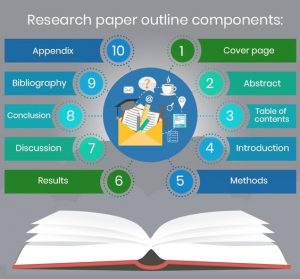The nursing profession thrives on knowledge and innovation. Research plays a vital role in advancing nursing practice, improving patient care, and shaping the future of the field. A well-structured nursing research paper outline is the cornerstone of any successful research endeavor. It acts as a roadmap, guiding you through the research process, ensuring clarity, and maximizing your chances of producing a compelling and impactful paper.
This comprehensive guide will equip you with the knowledge and tools necessary to craft a stellar nursing research paper outline.
The Significance of a Nursing Research Paper Outline
A
nursing research paper outline is not simply a list of topics but a structured framework that establishes the logical flow of your research. It defines the key elements of your paper, outlining the arguments, evidence, and analysis that will support your research question. This structured approach offers numerous advantages:
- Clear Direction: It provides a clear roadmap, preventing you from getting lost in the complexities of your research and ensuring a coherent and organized flow of ideas.
- Efficient Research: By outlining your research paper, you gain a structured approach to conducting your research, ensuring you gather relevant data and avoid unnecessary diversions.
- Improved Focus: The nursing research paper outline helps you stay focused on your research question, preventing tangents and ensuring your arguments directly address the core issue.
- Stronger Arguments: The outline enables you to carefully consider the evidence and arguments that support your research question, ensuring a logical and compelling narrative.
- Time Management: A well-structured outline allows you to manage your time effectively, breaking down the research process into manageable steps and avoiding procrastination.
- Enhanced Quality: The nursing research paper outline promotes a more rigorous approach to your research, leading to a higher-quality paper with well-supported arguments and conclusions.
Steps for Crafting a Stellar Nursing Research Paper Outline
The creation of a compelling nursing research paper outline is a multi-step process that involves careful planning and critical thinking. Here's a step-by-step guide to navigate this process:
- Identify Your Research Question:
The research question is the heart of your paper. It should be clear, focused, and address a relevant gap in nursing knowledge. Before embarking on your outline, take the time to refine and articulate your research question precisely.
- Determine the Research Design:
The research design dictates the methods and procedures you will employ to answer your research question. This involves choosing the most appropriate approach, considering quantitative, qualitative, or mixed methods. Clarifying the research design early on is crucial for structuring your nursing research paper outline.
- Define the Scope of Your Research:
The scope of your research determines the specific boundaries and limitations of your study. Defining the scope ensures you are focusing on a manageable and meaningful area of investigation. It is essential to articulate the scope within your nursing research paper outline to maintain focus and avoid unnecessary diversions.
- Develop a Tentative Outline:
The tentative outline is a preliminary framework that provides a general structure for your paper. This initial outline can be simple and should include the following key components:

- Introduction: This section introduces the topic, establishes the significance of your research question, and provides context for your study.
- Literature Review: This section summarizes and analyzes existing research relevant to your topic, identifying gaps in the literature that your study aims to address.
- Methodology: This section describes the research design, including the participants, data collection methods, and data analysis techniques.
- Results: This section presents the findings of your research, using tables, figures, and descriptive statistics to illustrate your results.
- Discussion: This section interprets the results, discussing their implications and limitations, and connecting them to existing research.
- Conclusion: This section summarizes the key findings, reiterates the significance of your research, and suggests potential areas for future research.
- Refine and Expand Your Outline:
The initial outline is a starting point; it needs refinement and expansion to create a comprehensive structure. Break down each section into sub-sections, identifying the key themes, arguments, and evidence you will present.
- Introduction:
- Briefly introduce the topic.
- State the research question clearly and concisely.
- Highlight the significance of the research question.
- Provide context for the research by referring to relevant literature.
- Briefly outline the main arguments and findings of your paper.
- Literature Review:
- Divide the literature review into thematic sections based on key concepts or arguments.
- Provide a critical analysis of each source, identifying its strengths and limitations.
- Synthesize the literature, highlighting key findings and areas of consensus and disagreement.
- Identify gaps in the literature that your research aims to address.
- Methodology:
- Describe the research design and its rationale.
- Define the population, sampling method, and sample size.
- Explain the data collection methods, including instruments, procedures, and ethical considerations.
- Outline the data analysis techniques to be used.
- Results:
- Organize the results according to the research questions or hypotheses.
- Present the findings using tables, figures, and descriptive statistics.
- Provide clear and concise explanations of the results.
- Discussion:
- Interpret the results in relation to the research question.
- Discuss the implications of the findings for nursing practice, theory, and future research.
- Analyze the strengths and limitations of the study.
- Compare and contrast your findings with existing research.
- Offer suggestions for future research based on the study's findings.
- Conclusion:
- Summarize the key findings of the research.
- Reiterate the significance of the research.
- Briefly discuss the limitations of the study.
- Suggest potential areas for future research.
- Include Supporting Evidence:
As you refine your nursing research paper outline, identify the key evidence and arguments that will support your claims. Include relevant citations from scholarly articles, books, and other reputable sources to substantiate your statements and strengthen your analysis.
- Use Subheadings and Bullet Points:
Subheadings and bullet points help to organize and clarify your nursing research paper outline. They make the outline more readable and improve the flow of information.
- Consider Your Audience:
Keep your audience in mind when developing your nursing research paper outline. Tailor the language and complexity of your arguments to your target readership, whether it's fellow nurses, researchers, or academics.
- Revise and Edit:
Once you have a complete nursing research paper outline, revise and edit it meticulously. Ensure the flow of ideas is logical, the arguments are clear and persuasive, and the evidence supports your claims.
Examples of Nursing Research Paper Outlines
To further illustrate the process of outlining, here are two examples of nursing research paper outlines for different types of research:
Example 1: Qualitative Research on Patient Experiences with Chronic Pain Management
- Introduction:
- Briefly introduce the topic of chronic pain management.
- State the research question: How do patients with chronic pain experience their pain management?
- Highlight the significance of understanding patient experiences.
- Briefly outline the qualitative research approach and methods.
- Literature Review:
- Chronic pain and its impact on individuals and families.
- Current approaches to chronic pain management.
- Patient experiences with chronic pain management, including challenges and barriers.
- Methodology:
- Research design: Phenomenological study using semi-structured interviews.
- Participants: Individuals with chronic pain diagnosed by a healthcare professional.
- Data collection: Semi-structured interviews with participants, focusing on their experiences with chronic pain management.
- Data analysis: Thematic analysis of interview transcripts.
- Results:
- Emerging themes from the interview data.
- Supporting quotes from participant interviews.
- Discussion:
- Interpretation of the themes in relation to the research question.
- Implications for nursing practice, particularly in relation to pain management.
- Limitations of the study.
- Suggestions for future research on chronic pain management.
- Conclusion:
- Summarize the key findings regarding patient experiences with chronic pain management.
- Reiterate the importance of understanding patient perspectives.
- Briefly discuss the implications for nursing practice.
- Suggest potential areas for future research.
Example 2: Quantitative Research on the Effectiveness of a New Nursing Intervention for Preventing Hospital-Acquired Infections
- Introduction:
- Briefly introduce the topic of hospital-acquired infections (HAIs).
- State the research question: Does the new nursing intervention effectively reduce the incidence of HAIs in hospitalized patients?
- Highlight the significance of preventing HAIs.
- Briefly outline the quantitative research approach and methods.
- Literature Review:
- HAIs: prevalence, risk factors, and consequences.
- Existing interventions to prevent HAIs.
- The theoretical framework underlying the new nursing intervention.
- Methodology:
- Research design: Randomized controlled trial (RCT).
- Participants: Hospitalized patients at risk of developing HAIs.
- Intervention: The new nursing intervention to be evaluated.
- Control group: Patients receiving standard care.
- Data collection: Standardized data collection tools to assess HAIs.
- Data analysis: Statistical analysis of the data to compare the effectiveness of the new nursing intervention and standard care.
- Results:
- Presentation of the data in tables and figures.
- Statistical analysis of the data to determine the effectiveness of the intervention.
- Discussion:
- Interpretation of the results in relation to the research question.
- Implications of the findings for nursing practice and infection control.
- Limitations of the study.
- Suggestions for future research on HAIs and nursing interventions.
- Conclusion:
- Summarize the key findings regarding the effectiveness of the new nursing intervention.
- Reiterate the significance of preventing HAIs.
- Briefly discuss the implications for nursing practice.
- Suggest potential areas for future research.
Mastering the Art of Outlining for Success
Crafting a stellar nursing research paper outline is a crucial step in producing a compelling and impactful research paper. It provides structure, focus, and direction, allowing you to navigate the complexities of research with clarity and confidence. Following the step-by-step guide and considering the examples provided will enable you to develop a nursing research paper outline that will guide you through every stage of your research process and ultimately contribute to the advancement of nursing knowledge and practice.

Remember, a well-structured nursing research paper outline is the foundation of a successful research endeavor, laying the groundwork for a compelling and impactful paper that can shape the future of nursing.
Get the Best Nursing Research Paper Writing Service
At
Academia Scholars, we can help you with writing a stellar nursing research paper outline. However, you can also let our writers craft the whole paper so you have an ample time to focus on other assignments. Our nursing research paper writing service covers topic suggestion, paper writing, proofreading and editing, and plagiarism removal. We also offer writing services for
nursing essays,
case studies and
dissertations.

 Remember, a well-structured nursing research paper outline is the foundation of a successful research endeavor, laying the groundwork for a compelling and impactful paper that can shape the future of nursing.
Remember, a well-structured nursing research paper outline is the foundation of a successful research endeavor, laying the groundwork for a compelling and impactful paper that can shape the future of nursing.